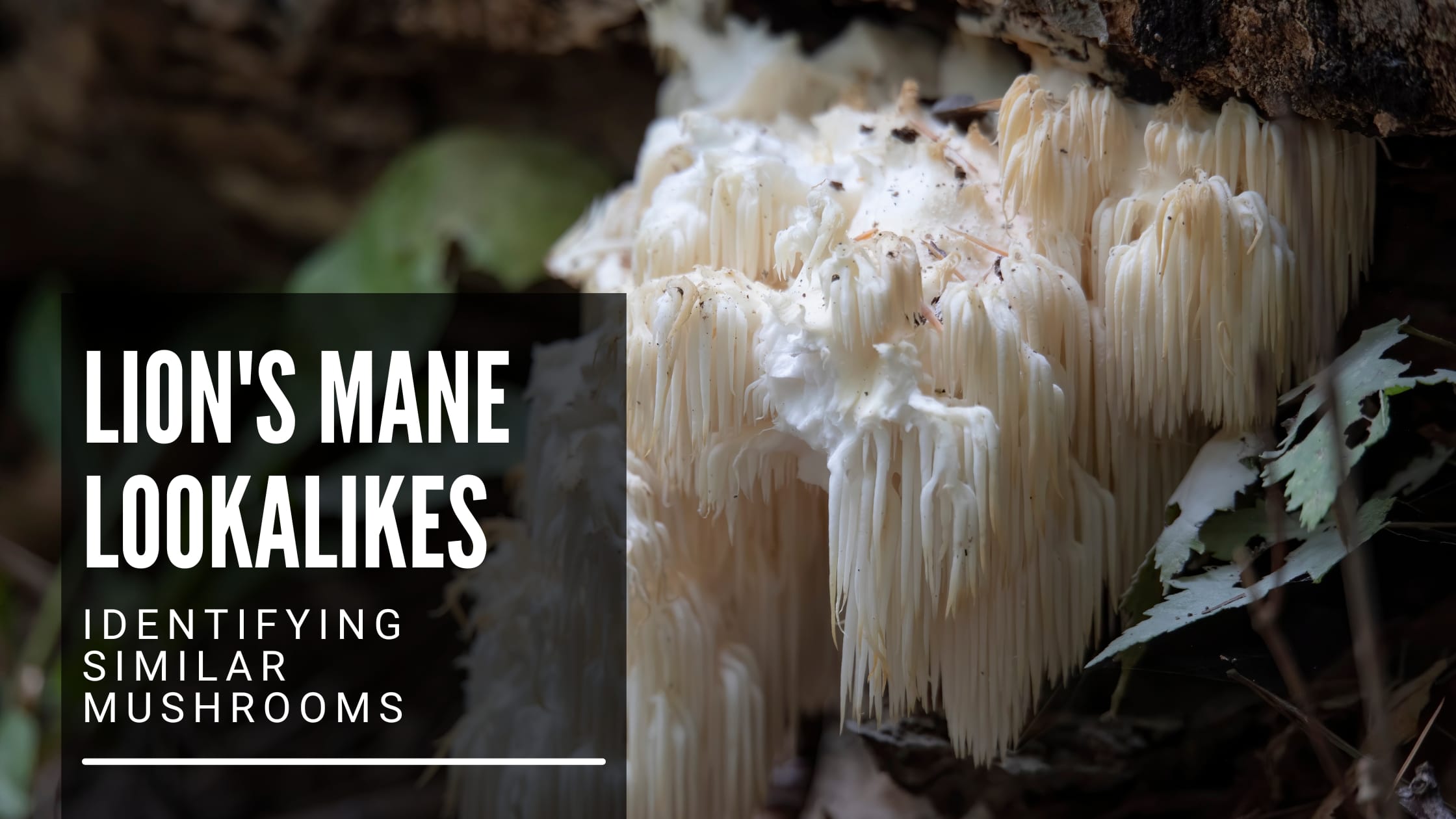Lions Mane Look-Alikes: A Comprehensive Visual Guide
Are you fascinated by the world of fungi and eager to explore the potential benefits of Lion’s Mane mushroom? Known for its shaggy, cascading appearance reminiscent of a lion’s mane, this unique mushroom is a popular choice for both culinary enthusiasts and those seeking its purported health benefits. However, with its distinctive look, it’s crucial to be able to accurately identify Lion’s Mane to avoid accidentally consuming a look-alike. This guide provides a comprehensive visual comparison to help you confidently distinguish Lion’s Mane from its potential mimics.
Understanding Lion’s Mane ( Hericium erinaceus)
Before diving into the look-alikes, let’s establish the key characteristics of the real deal. Lion’s Mane, also known as Hericium erinaceus, is a white or creamy-colored mushroom that grows on hardwood trees. Here’s what to look for:
- Appearance: A large, round or irregularly shaped fruiting body with long, hanging spines (teeth) that are typically ½ to 2 inches long.
- Texture: Spongy and fleshy when young, becoming firmer with age.
- Color: Predominantly white or cream-colored, often with a yellowish or brownish tinge as it ages.
- Habitat: Found growing on dead or dying hardwood trees, especially oak, maple, and beech.
- Smell: Often described as having a seafood-like aroma when fresh.
The Most Common Lion’s Mane Look-Alikes
Several other fungi share similarities with Lion’s Mane, making accurate identification essential. Here’s a visual comparison to help you differentiate them:
1. Hericium americanum (American Lion’s Mane)
While not a true “look-alike” in the sense of being poisonous, Hericium americanum is closely related to Lion’s Mane and can sometimes be confused.
- Key Difference: American Lion’s Mane typically has teeth that are more densely packed and often arranged in a more “clustered” or “branched” pattern compared to the more cascading, flowing appearance of Hericium erinaceus. It also tends to have a slightly more yellowish hue.
- Edibility: Edible and with similar culinary and potential health benefits as Hericium erinaceus.
2. Hericium coralloides (Coral Tooth Fungus)
This mushroom presents a completely different look than Lions Mane, but is still a member of the Hericium genus.
- Key Difference: Instead of a single, large mass, Coral Tooth Fungus grows in a branched, coral-like structure with numerous short, downward-pointing spines.
- Color: Typically white or cream-colored.
- Edibility: Edible and considered a choice edible mushroom.
3. Clavariaceae (Coral Fungi)
There are many species of coral fungi, which can be easily confused with younger, less developed Lion’s Mane mushrooms.
- Key Difference: Coral fungi have a branched, coral-like appearance, but their branches are usually smooth, lacking the distinct spines of Lion’s Mane.
- Color: Varies greatly depending on the species, from white and cream to yellow, orange, pink, and even purple.
- Edibility: Edibility varies greatly among species. Some are edible, some are not, and some may be toxic. Identification is crucial.
4. Hydnellum peckii (Bleeding Tooth Fungus)
While not directly resembling Lion’s Mane in shape, Hydnellum peckii can be confused by inexperienced mushroom hunters.
- Key Difference: Hydnellum peckii is a bracket fungus with a distinct, irregular shape and a fuzzy texture. It bleeds a reddish liquid when young, which is a key identifying feature.
- Color: Tan to brown, often with white or cream-colored margins.
- Edibility: Not considered edible and can cause gastrointestinal distress.
Tips for Safe Mushroom Hunting
- Never consume a mushroom unless you are 100% certain of its identification. When in doubt, throw it out.
- Consult with an expert: If you’re new to mushroom hunting, join a local mycological society or consult with a knowledgeable expert.
- Take clear photographs: Photograph the mushroom from multiple angles, including the top, bottom, and side.
- Note the habitat: Record the type of tree the mushroom is growing on, the surrounding environment, and the elevation.
- Use multiple field guides: Compare your findings with several reliable field guides.
- Consider a spore print: Take a spore print to help with identification, especially when trying to distinguish between closely related species.
Conclusion
Accurately identifying Lion’s Mane mushroom is crucial for both safety and enjoying its potential benefits. By understanding the key characteristics of Hericium erinaceus and being aware of its potential look-alikes, you can confidently navigate the world of fungi. Always prioritize safety, consult with experts, and never consume a mushroom unless you are absolutely certain of its identity. Happy hunting!
Frequently Asked Questions (FAQs)
1. What should I do if I think I’ve eaten a poisonous mushroom?
Seek immediate medical attention. Contact your local poison control center or go to the nearest emergency room. Bring a sample of the mushroom, if possible, for identification.
2. Are all white mushrooms poisonous?
No, not all white mushrooms are poisonous. However, many poisonous mushrooms are white, making it essential to accurately identify any mushroom before consumption.
3. Can I grow Lion’s Mane at home?
Yes, you can grow Lion’s Mane at home. You can purchase grow kits or cultivate it using spawn and appropriate substrates (typically hardwood logs or supplemented sawdust blocks).
4. Is Lion’s Mane safe for everyone to consume?
Lion’s Mane is generally considered safe for consumption. However, some individuals may experience mild side effects, such as digestive upset. If you have any underlying health conditions or are taking medications, consult with your doctor before consuming Lion’s Mane.




